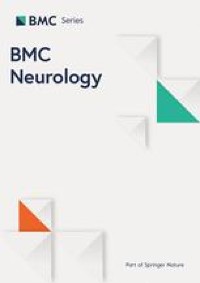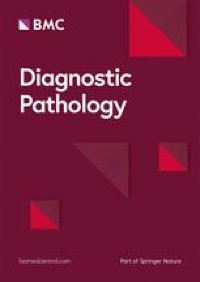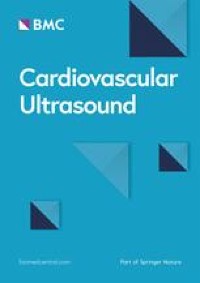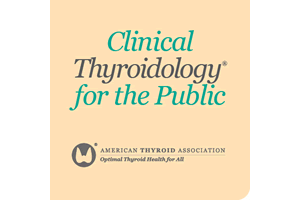|
Medicine by Alexandros G. Sfakianakis,Anapafseos 5 Agios Nikolaos 72100 Crete Greece,00302841026182,00306932607174,alsfakia@gmail.com,
Αρχειοθήκη ιστολογίου
-
►
2023
(272)
- ► Φεβρουαρίου (141)
- ► Ιανουαρίου (131)
-
►
2022
(2066)
- ► Δεκεμβρίου (80)
- ► Σεπτεμβρίου (170)
- ► Φεβρουαρίου (190)
- ► Ιανουαρίου (203)
-
▼
2021
(7399)
- ► Δεκεμβρίου (186)
- ► Σεπτεμβρίου (472)
- ► Φεβρουαρίου (851)
-
▼
Ιανουαρίου
(788)
-
▼
Ιαν 14
(50)
- A time series analysis of the relationship between...
- Sonografie der Prävertebralregion bei Schluckstöru...
- Reconstruction of Orbital Exenteration Defects wit...
- Platelet-Rich Fibrin Enhances Surgical Wound Heali...
- Perioperative Management of Nasal Septal Perforati...
- Aspiration biopsy versus dilatation and curettage ...
- Placental pathology of the third trimester pregnan...
- Cancers, Vol. 13, Pages 295: Immune Therapies for ...
- Study on the views and methods of ultrasonic scree...
- Roles of the BAP1 tumor suppressor in cell metabolism
- Epigenetic and post-transcriptional modulation of ...
- Clinical Thyroidology® for the Public – Highlighte...
- Thyroid® Open Access Articles
- The Oxford Classic Links Epithelial-to-Mesenchymal...
- Diffusion-weighted imaging allows for downgrading ...
- Clinical Proteomics of Metastatic Melanoma Reveals...
- Efficacy of Pembrolizumab Monotherapy for Advanced...
- 72-h diurnal RNA-seq analysis of fully expanded th...
- The Effects of Intervening With Synonasal Changes ...
- One-Half Wedge Osteotomy Genioplasty for Correctio...
- Fibula Free Flap Salvage From 10-hour Prolonged Ar...
- Potential Complications With Cryopreserved Cadaver...
- Protective Effects of Helmet Type on Facial Injuries
- Pneumosinus Dilatans: A Novel Algorithm for its Cl...
- Management of Maxillofacial Trauma in Attempt Suic...
- Impact of Transmission Control Measures on the Epi...
- Is Decreased Local Bone Quality an Independent Ris...
- A Complication of Mycobacterium chelonae Infection...
- Outcomes in Orbital Floor Trauma: A Comparison of ...
- Facial Fractures and Mixed Dentition – What Are th...
- Soft Palate Fistula in a Patient With Normal Palat...
- Augmentation Genioplasty Using a Third Molar as a ...
- Cancers, Vol. 13, Pages 296: Triple-Negative Breas...
- Versatile Approach to Septonasal Deformity: Skyscr...
- Self-Cross-Linked Hyaluronic Acid Hydrogel in Endo...
- Lacrimal Duct Obstruction Caused by Nasomaxillary ...
- A Posterior Rotational Flap Technique Using Distra...
- Predictors of the Size and Surgical Freedom of the...
- Anatomical Variations of the Jugular Foramen Regio...
- Aggressive Treatment Including Endonasal Surgical ...
- Cognitive Pathways to Belief in Karma and Belief i...
- Automation of Quantifying Axonal Loss in Patients ...
- Delivery of Anti‐microRNA‐712 to Inflamed Endothel...
- A Colon‐Targeted Oral Probiotics Delivery System U...
- Cascade Catalytic Nanoplatform Based on “Butterfly...
- Multifocal glioblastoma—two case reports and liter...
- Rheumatology-led pregnancy clinic: men perspective
- Body mass index as an independent prognostic facto...
- On recent meta-analyses of exposure to glyphosate ...
- Integrating lipidomics and genomics: emerging tool...
-
▼
Ιαν 14
(50)
-
►
2020
(2517)
- ► Δεκεμβρίου (792)
- ► Σεπτεμβρίου (21)
- ► Φεβρουαρίου (28)
-
►
2019
(12076)
- ► Δεκεμβρίου (19)
- ► Σεπτεμβρίου (54)
- ► Φεβρουαρίου (4765)
- ► Ιανουαρίου (5155)
-
►
2018
(3144)
- ► Δεκεμβρίου (3144)
Ετικέτες
Πληροφορίες
Πέμπτη 14 Ιανουαρίου 2021
A time series analysis of the relationship between ambient temperature and ischaemic stroke
Sonografie der Prävertebralregion bei Schluckstörungen nach Eingriffen an der Halswirbelsäule
|
Reconstruction of Orbital Exenteration Defects with Cheek Rotation Flaps: Indications, Technique, Complications, Rehabilitation, and Survival
|
Platelet-Rich Fibrin Enhances Surgical Wound Healing in Total Laryngectomy
|
Perioperative Management of Nasal Septal Perforation: A Case Series and Review
|
Aspiration biopsy versus dilatation and curettage for endometrial hyperplasia prior to hysterectomy
|
Placental pathology of the third trimester pregnant women from COVID-19
|
Cancers, Vol. 13, Pages 295: Immune Therapies for Hematologic Malignancies
|
Study on the views and methods of ultrasonic screening and diagnosis for abnormal aortic arch in infants
|
Roles of the BAP1 tumor suppressor in cell metabolism
|
Epigenetic and post-transcriptional modulation of SOS1 can promote breast cancer metastasis through obesity-activated c-Met signaling in African American women
|
Clinical Thyroidology® for the Public – Highlighted Article
|
Αναζήτηση αυτού του ιστολογίου
! # Ola via Alexandros G.Sfakianakis on Inoreader
-
Does CBD Oil Lower Blood Pressure? This article was originally published at SundayScaries." Madeline Taylor POSTED ON January 13, 20...
-
The device, cleared in Europe a couple of years ago, is used to ablate cardiac tissue as part of treatment for atrial fibrillation. It featu...
-
Overdue: a US advisory board for research integrity Overdue: a US advisory board for research integrity, Published online: 11 February 201...










